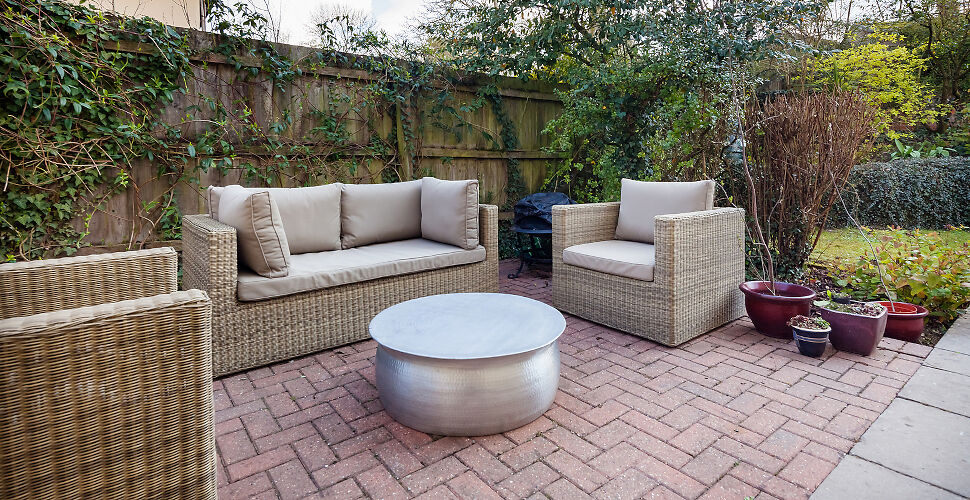
March 14th, 2023 by
Many factors can influence gardening trends, from obvious things like weather and climate to stylistic preferences and even socio-political elements such as the cost of living crisis. We can see all of these influences in the trends that are predicted for 2023.
Here are 5 key trends that we expect to be big this year:
Drought-resistant gardening and a Mediterranean influence
2022 brought periods of extreme heat and insufficient rainfall, resulting in a hosepipe ban in many areas that lasted for weeks, if not months. As the weather becomes more variable, meteorologists are predicting that we could be in for more of the same in 2023 so it’s not surprising that one of the greatest trends for this year is equipping our gardens to meet this challenge.
Gardens that are able to thrive in dry conditions will be the goal that many gardeners are working towards. Not only will these gardens be able to cope better with extreme weather when it comes, but they also are more environmentally responsible, as they use less water generally, and are less demanding to maintain as they won’t need watering as frequently. This practice of designing gardens that require minimal irrigation is known as xeriscaping. Of course, we don’t simply design our gardens around practicality, we also want outdoor spaces that look beautiful and bring us joy so it’s no surprise that when creating drought-resistant gardens, we look to the Mediterranean for inspiration, in particular Greek gardens.
This will include selecting drought-resistant plants, such as lavender, cistus, cypress, climbing plants and tall trees that provide more shade. Raised beds, adding stone and gravel to planting beds, and incorporating garden décors such as Greek-inspired stoneware and even sculpture will create a Mediterranean vibe that is as beautiful as it is hardy.

Slow growing
Slow growing is all about being patient and seeing your garden as a long-term project rather than an instant fix. That means growing your own plants from bulb and seed rather than buying established plants and moving away from the fleeting beauty of seasonal bedding plants and building up a flourishing garden of perennials and self-seeding plants over a period of years.
A big part of this is collecting your own seeds and drying them for subsequent years and soil quality is also very important as this will provide the nutrients that young plants need (we’ll talk more about this in the next item). While you won’t get the immediate gratification that popping in a load of ready-grown plants offers, you will get hardy, resilient plants that become established in a healthy way and a garden that will change and develop over time. And you cannot underestimate the satisfaction and pride that comes with nurturing it yourself. It’s also no coincidence that this trend comes at a time of economic challenge as it’s more cost-effective over the long term, less wasteful, and offers better sustainability.
Ethical gardening
Most scientists attribute the increasingly extreme weather conditions we are experiencing to climate change so it should come as no surprise to anyone that ethical, sustainable gardening practices are being adopted in 2023.
This will include things like discontinuing the use of peat in compost and looking for other organic methods for improving soil quality. Peat will be banned from 2024, due to the erosion of ecologically important peatlands (peat is excellent at capturing carbon) but gardeners are encouraged to desist using it now. There are many ways to improve soil quality that doesn’t rely on peat such as digging in household compost, gravel mulch, or nutrient supplements such as iron sulphate. You can even grow plants specifically to use them as compost such as winter beans and comfrey.
Other sustainable gardening activity includes reducing pesticides, being less reliant on water (as covered in item 1 but also conserving as much water as possible through things like water butts) and letting gardens grow a little wilder to encourage greater biodiversity to attract pollinators such as bees and butterflies, worms that will improve soil quality, and natural pest controllers such as spiders, hedgehogs, and frogs.

Deep, brooding colour
It’s not all just practicality this year. Colour trends will be moving to deeper, richer shades including purples, plums, burgundies, and burnt oranges. This will be most represented in planting, including blooms but stems and leaves as well, and will also spill over into furniture and décor. Coordinate cushions and parasols or even paint furniture, summer houses, or fencing to match.
Garden as a sanctuary
These can be difficult times to live through so many people are looking for spaces where they can go for peace and tranquillity and gardens can represent exactly that. Taller plants and trees can offer privacy and vertical planting can create an enclosed, safe space. Plants were grown for their fragrance as much as their appearance offers a sensory experience, and seating areas or places for dining can allow you to relax and take advantage of clean air, sunlight, and vitamin D.
Comments
Leave a reply
Your e-mail address will not be published. All fields are required


